Here are some awesome left hand finger exercises for fingerstyle guitar to develop your hand and finger strength.
Are you a guitar player looking for ways to to develop your hand strength? So, you probably want to improve your fretting hand strength or strengthen your left hand for guitar playing.
Now, you may have come across some guides telling you to use a funny hand gimmick with springs in order to get more finger strength. But I'm here to tell you that you need none of that to improve your finger strength for guitar playing.
In fact, this resource will show you how you can combine hammer-on and pull-off techniques while playing scales to create the ultimate fretting hand strengthening exercise.
If you are just starting out playing fingerstyle guitar, you should learn these techniques straight away and incorporate them into your practice routine.
Let's dive right into the ultimate hand strengthening exercise for fingerstyle guitarists.
What Is The Best Hand Strengthening Exercise For Guitarists?
The best exercise guitarists can do to strengthen the fretting hand is to practice slur scales.
A slur scale is a technique that involves playing a scale, usually the major or minor scale, and connecting each note of the scale with either a hammer-on or a pull-off. These are also called slurs or legato playing.
In a slur scale, you perform hammer-ons for the ascending scale and pull-offs for the descending scale. By paying attention to your sound and making sure that your sound is even and of equal volume, you will develop finger strength in your fretting hand.
Slur scales are excellent as a warm-up, but you can also use them to develop your finger strength, dexterity and hand coordination.
How To Increase Your Finger And Hand Strength
To improve your hand strength when practicing scales, you must be hyper-focused on the exact position of your fingers. Be sure to land the finger exactly in the spot on the fretboard that produces the best sound. This is usually right behind the fret, and each finger arrives at a slightly different angle with respect to the surface of the fingerboard.
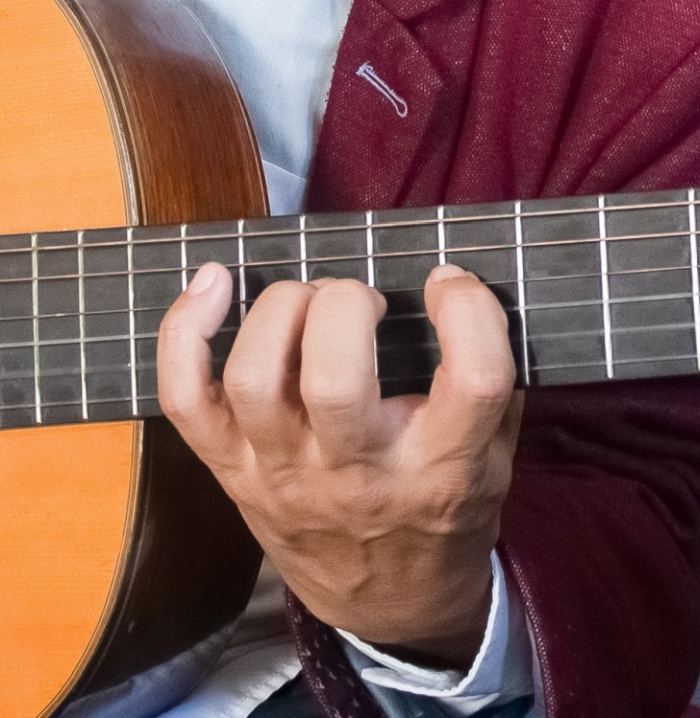
Also, keep the finger placement proper by using the fingertip as much as possible. Classical guitarist Scott Tenant also recommends that you never allow the joints of your fingers to touch, because to do so would seriously impediment your finger independence.
This is very good advice for practicing hand or finger strengthening exercises, because it will allow you to develop each of the larger muscles in your hand. It's not required when performing songs, however. So, just be aware that there are certain chords, such as barre chords, that will require you to bring your fingers closer together and not separate them.
Now that we've learned how to increase your hand strength, let's look at the ultimate exercises for strengthening your left hand for guitar playing.
5 Hand Strengthening Exercises For Guitarists
Now let's move on to the hand strengthening exercises themselves. Remember that the entire point of these exercises is to get an even sound from each of your fingers, from the index right to the pinkie.
Thus, if you notice that certain legato passages suddenly give you a lower volume, you'll know to pinpoint that exact finger combination for improvement during your practice session.
1. Easy Cees
Let's start with an easy slur scale to get our fingers all warmed up and nimble for the tougher exercises later on. Our first hand strengthening exercise, Easy Cees, is an easy C Major slur scale that covers one octave.
You can play this scale in second position. This means that your index finger stays in the second fret, your middle finger stays in the third fret, your ring finger stays in the fourth fret and your pinky finger stays in the fifth fret.

2. Fantastic Fiesta
Did you notice that almost no slur scales are playable in first position without some hand shifting? That's the case with our next hand strengthening exercise, Fantastic Fiesta. This two-octave F major slur scale will get you playing in first and second position. Also notice the repeat signs - play this one over, and over again!
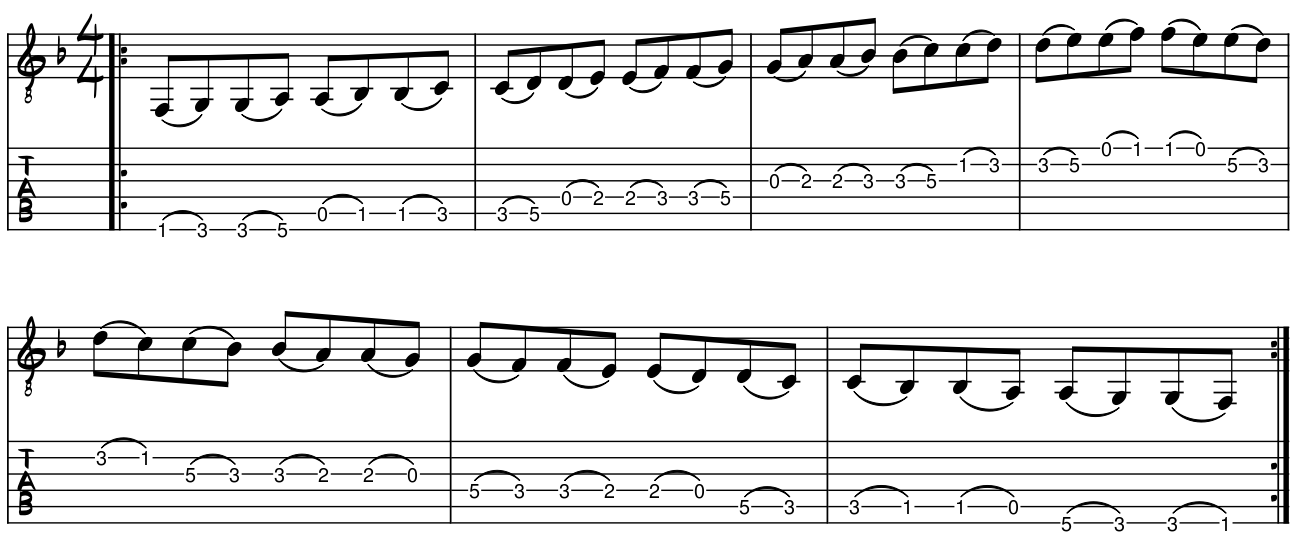
3. Dazzling Digits
Now let's move on to the D major scale for our third hand strengthening exercise. In Dazzling Digits, we will cover two octaves on the guitar, starting at the seventh position, and we will go into a really, really high position to touch the twelfth fret on your acoustic guitar.
You might find it a bit cramped when placing your fingers in those upper frets on the fingerboard. So, if you're not used to playing in a higher position, make sure to focus on accuracy and keep it slow when you're starting out.
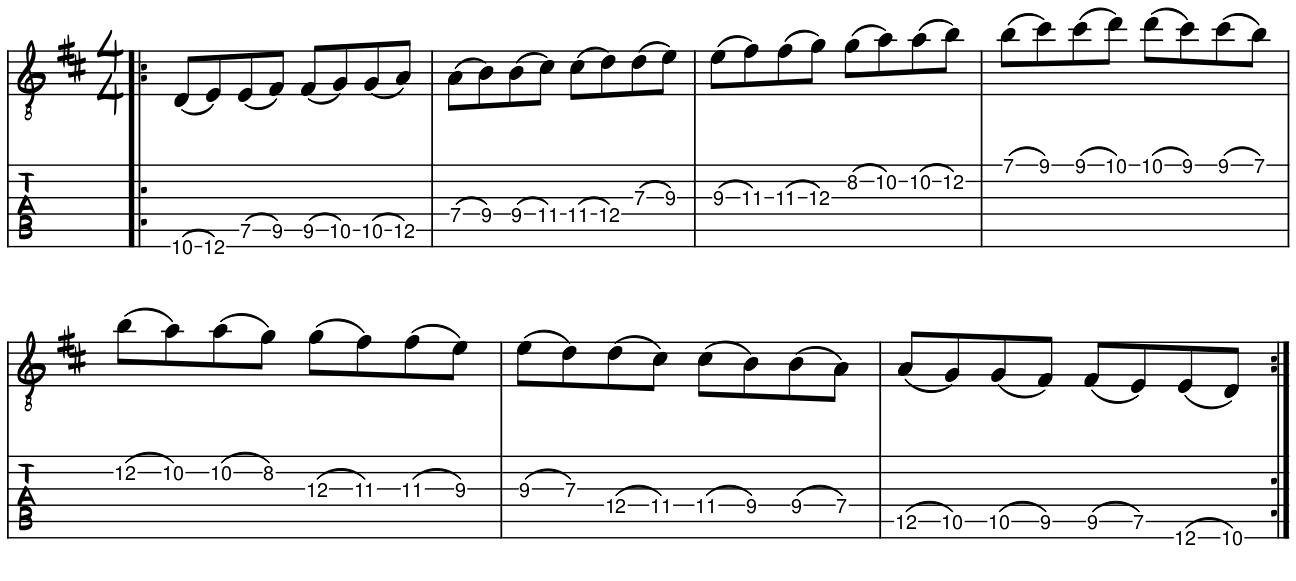
4. A Major Adventure
As we expand into the sharp keys, we can go back to using open strings, but now need to bring some shifts and hand position changes into the mix. In A Major Adventure, you'll find the A major slur scale starting out with a hammer-on into the second fret.
But, this hand strengthening exercise will require you to adjust your hand position from first position into second position, in order for you to get the g sharp note located in the third string, first fret.
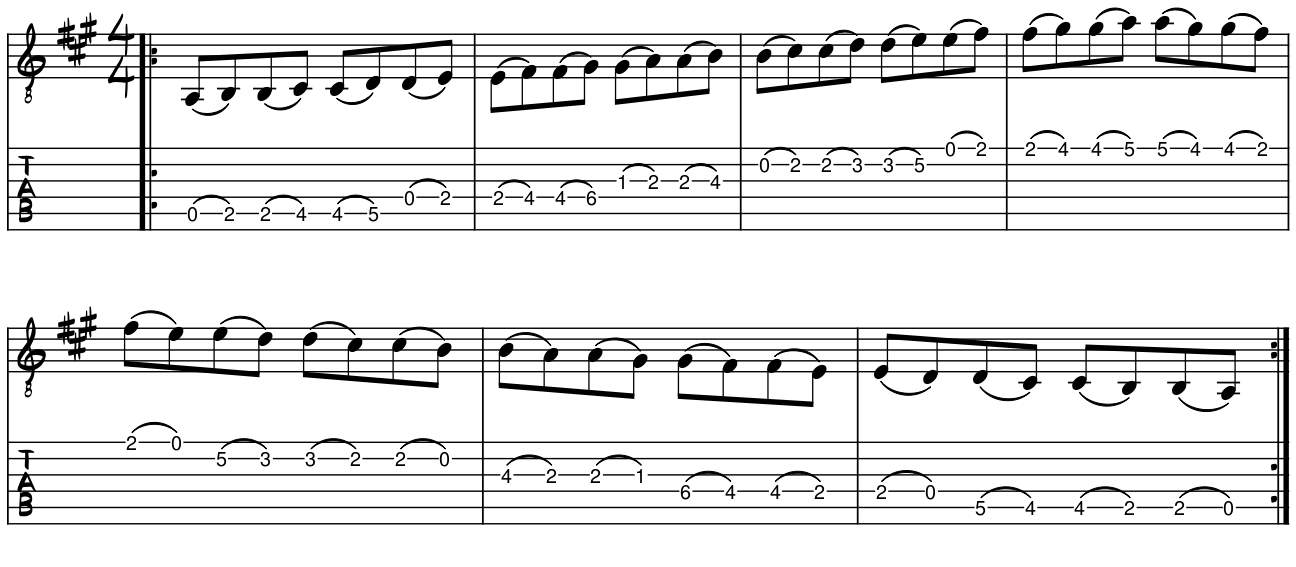
5. Frivolous F Sharpie Delight
Unlike the diatonic major scale pattern, which you can play anywhere up and down the neck, there isn't a one-size-fits-all scale pattern for the diatonic major slur scale. In other words, you're free to create your own finger pattern for any key. Here, I've created a slur scale pattern for the F sharp major scale in first position. This scale uses almost no open strings, for an extra finger workout.
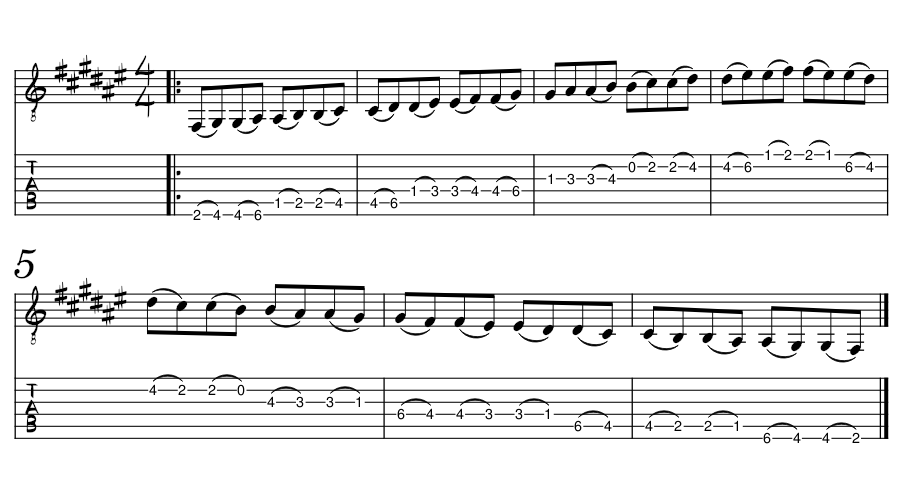
Getting The Most Out Of These Hand Strength Exercises
When playing slur scales, try not to just use one combination of fingers, or the most obvious combination. Instead, try out many different combinations.
For example, when pulling off from the 6th to the 4th fret, consider using the weaker pinky and middle fingers of the left hand to work on developing the strength of the less-used fingers.
Similarly, you can practice doing hammer-ons between the ring and pinky fingers of the left hand, to develop accuracy with the weaker fingers.
If you are tired of playing exercises like this and want to learn some real songs instead, check out my course Play Fingerstyle Guitar Now!



